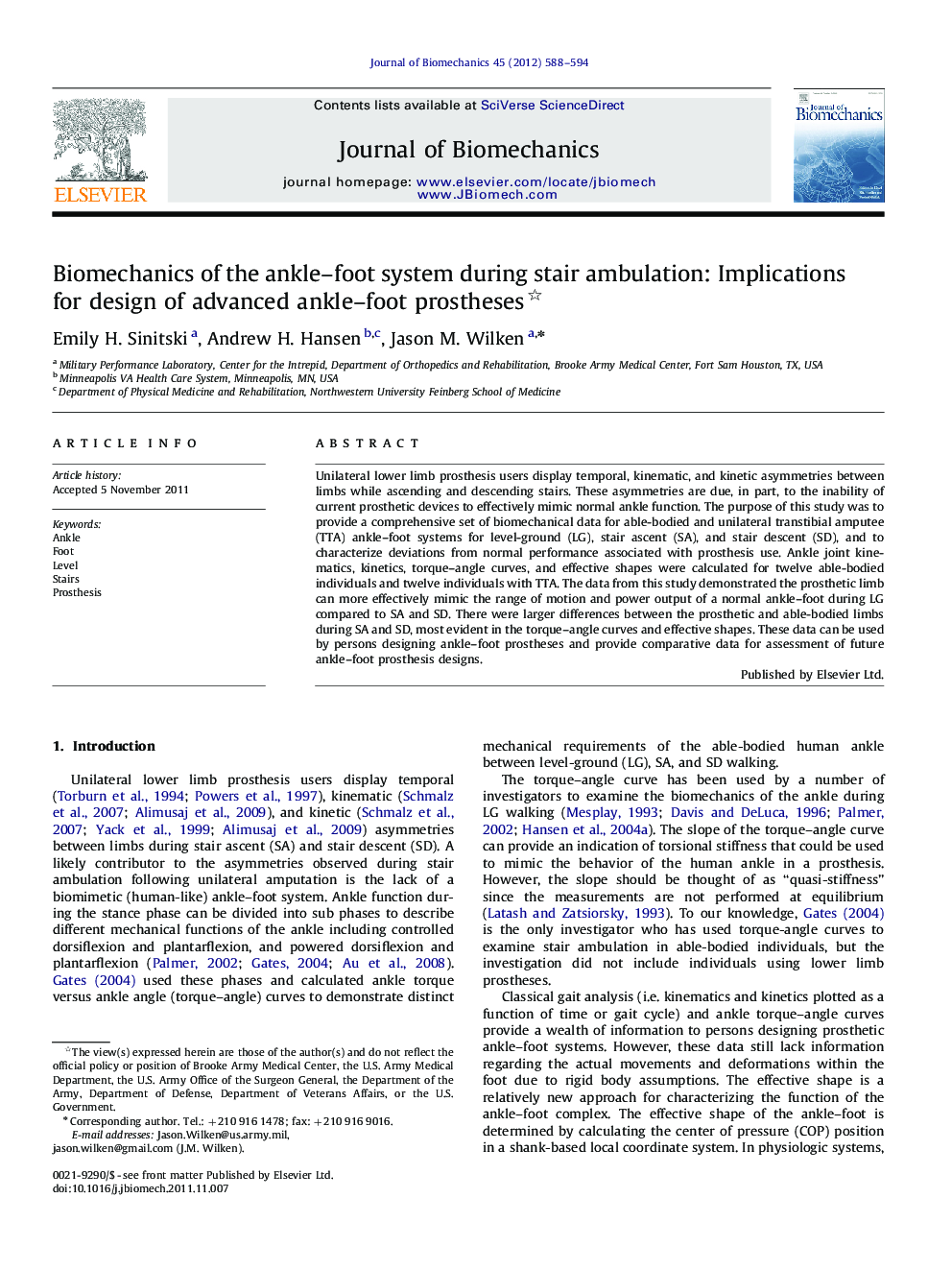| Article ID | Journal | Published Year | Pages | File Type |
|---|---|---|---|---|
| 10432686 | Journal of Biomechanics | 2012 | 7 Pages |
Abstract
Unilateral lower limb prosthesis users display temporal, kinematic, and kinetic asymmetries between limbs while ascending and descending stairs. These asymmetries are due, in part, to the inability of current prosthetic devices to effectively mimic normal ankle function. The purpose of this study was to provide a comprehensive set of biomechanical data for able-bodied and unilateral transtibial amputee (TTA) ankle-foot systems for level-ground (LG), stair ascent (SA), and stair descent (SD), and to characterize deviations from normal performance associated with prosthesis use. Ankle joint kinematics, kinetics, torque-angle curves, and effective shapes were calculated for twelve able-bodied individuals and twelve individuals with TTA. The data from this study demonstrated the prosthetic limb can more effectively mimic the range of motion and power output of a normal ankle-foot during LG compared to SA and SD. There were larger differences between the prosthetic and able-bodied limbs during SA and SD, most evident in the torque-angle curves and effective shapes. These data can be used by persons designing ankle-foot prostheses and provide comparative data for assessment of future ankle-foot prosthesis designs.
Keywords
Related Topics
Physical Sciences and Engineering
Engineering
Biomedical Engineering
Authors
Emily H. Sinitski, Andrew H. Hansen, Jason M. Wilken,
